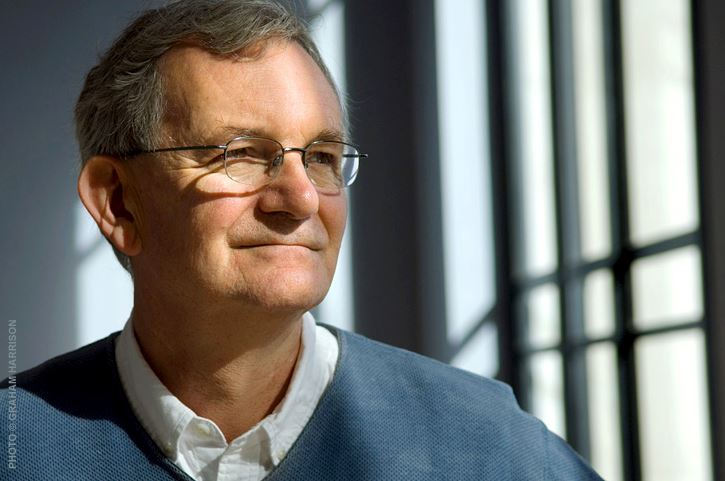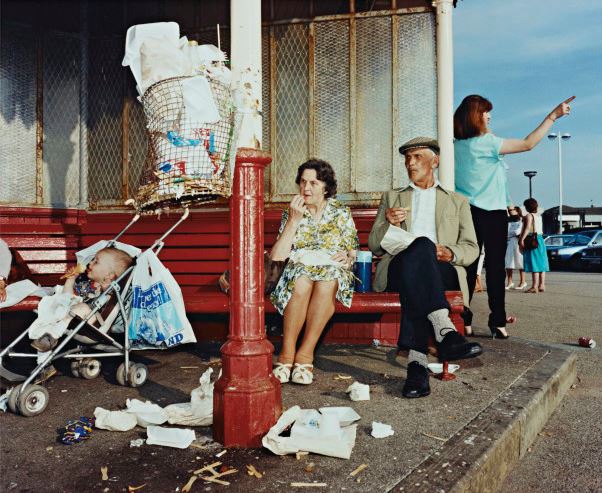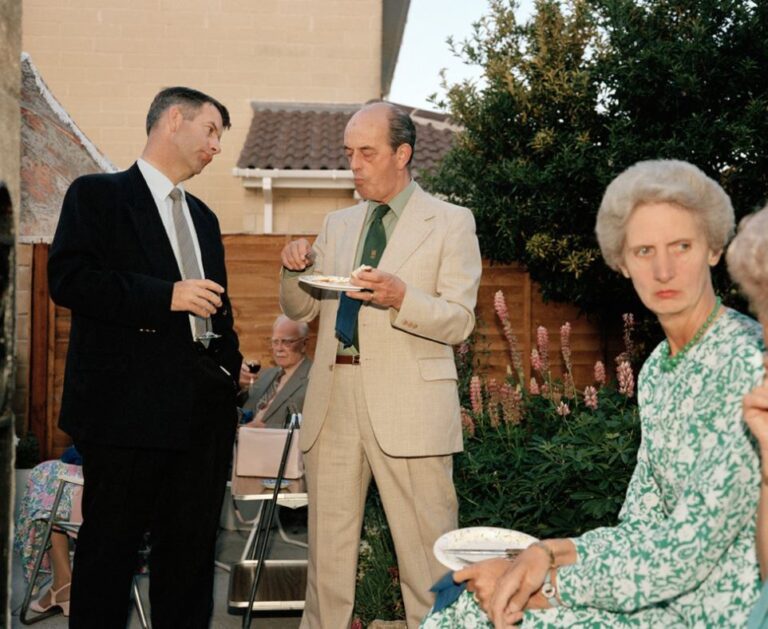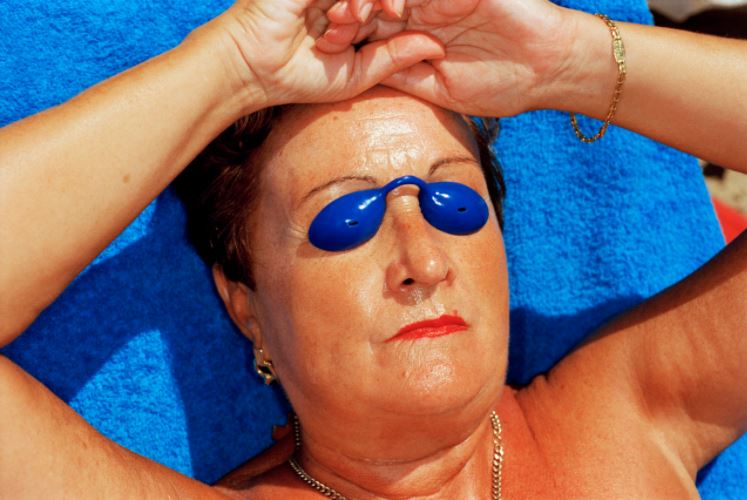MARTIN PARR
Martin Parr is a British documentary photographer known for his quirky observations of British life, as well as his aesthetic of close-up photos with highly saturated colors. “I’m fascinated by the world we live in,” Parr says, “and how I can interpret it and turn it into images.” He’s proof that you can make intelligent and witty documentary photographs wherever you are.

Parr was born in 1952 and spent his childhood in Epsom, Surrey. He studied photography at Manchester Polytechnic from 1970-72 and in 1975, moved to Hebdon Bridge in Yorkshire, attracted by its close rural community. He stayed for five years, producing a series of black and white images with natural light. Here’s a picture from this series that I like. It reminds me of how keen people in Britain are to have clean windows.

In 1980, Parr, inspired by the work of U.S. photographers Joel Meyerowitz, William Eggleston, and Stephen Shore, switched to color photography. Color photography was not the medium of choice for documentary work at this time. Parr says, “You could say my black-and-white work was a celebration of society, and the color by nature – especially starting with New Brighton, which is a very run-down seaside resort – was more of a critique.”

From 1983-85, Parr photographed working-class people on vacation in New Brighton, near Liverpool. Of these photographs, critic Karen Wright wrote, “He was attacked by some critics for his scrutiny of the working classes, but looking at these works, one merely sees Parr’s unflinching eye capturing the truth of a social class embracing leisure in whatever form available.” In addition to color, Parr used daylight flash, which, he says, gave his pictures a “surreal look and feel, which I very much enjoyed… When I discovered the combination of using a macro lens with ring flash, it was very exciting to see what it could offer.”
In 1985, Parr moved to Bristol, where he still lives. Here, he completed another project, The Cost of Living, a critique of the middle class under Margaret Thatcher’s Britain.

Another project, Common Sense (1995-99), explores consumerism. “From kitsch to grotesque,” describes Magnum Photos, “Common Sense documents modern consumerist culture. These vivid and often lurid photographs are both funny and sad, taking a forensic look at everyday items. A smorgasbord of over-the-top visuals, highlighting everything from tacky clothes and jewelry to different kinds of junk food.”

Parr became a full member of Magnum Photos in 1994. Magnum Photos is an international photographic cooperative of prestigious photographers. He served as president of Magnum Photos International from 2014-2017, has published many books, received many awards, and has exhibited his work all over the world. In 2014, he founded the Martin Parr Foundation, an archive of prints and books, and a gallery of mainly British and Irish photographers.
I resonate with Parr’s photography. I’m glad to have had time to consider his work this week as I’ve also been writing about Carrie Mae Weems and Cindy Sherman. I feel like I should connect with them, but it’s a struggle; I don’t think like them. They are critically acclaimed (for good reason) but they are not me, nor how I think. After spending time with Martin Parr’s work, I felt more encouraged. I’ll never be Weems or Sherman, but I’d like to be and think I could be, a little bit like Martin Parr.

